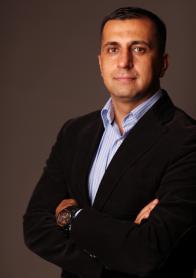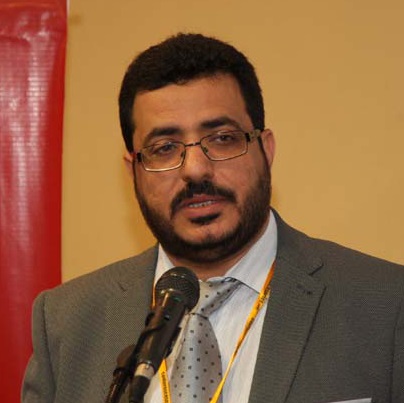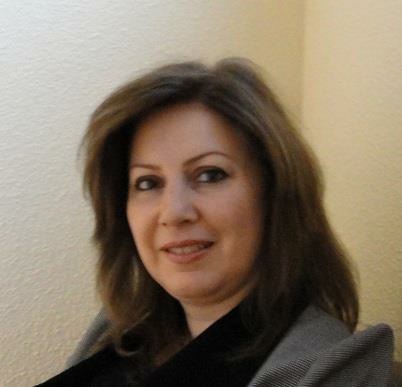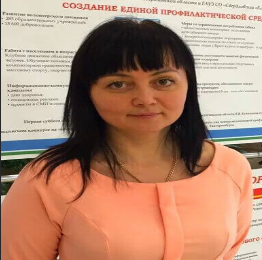Scientific Program
Keynote Session:
Title: The treatment of acute myocardial infarction
Biography:
Dr. Dorel P..Dimcea, MD, PhD., Doctor of Philosophy in Medicine (PhD Degree),. Doctor of Cardiology/DPhil-Cardiology , Dsc. PhD-Cardiologist, .Post -Graduate in Cardiology, Post-Graduate in Echocardiography, Doctor of Medicine (MD Degree). Owner & Clinician in the field of Cardiovascular Medicine at Dr. Dimscha Cardiac Clinic ,Cyprus.
Abstract:
The atheroma plaque rupture/erosion and the consecutive thrombosis are the main pathogenic mechanism of ACS.
Infective agents in the coronary atheroma have the role in atheroma plaque rupture. Eventually we can say that atherosclerosis and the rupture of the plaque are somehow associated with the infectious agents. The goal is to make the vessel permeable again, to save the affected myocardium.
The goal is to stop the thrombosis progression in the involved artery and remote emboli. Specific case study will illustrate the importance of antibiotic treatment added to classic treatment from the first moment of Acute Myocardial Infarction.
The antibiotic Roxihtromycin added to other treatment had a highly positive role in the evolution of the patients with Acute Myocardial Infarction.
Title: Introducing medical simulation into cardiac training curriculum
Biography:
Assistant Professor king Saud Bin Abdulaziz University and Health Science, Clinical and Research Pediatric Critical Care fellowship from University of Western Ontario, Canada, 2001, Clinical Pediatric Respiratory, University of Toronto, Canada, Arab and Saudi Board of Pediatrics, 1997.Currently Appointed as Consultant Pediatric Intensive Care and Pulmonory at King Fahad Medical City(KFMC) ,Chairperson of Post Graduate Simulation Department at Center for research , Education, Simulation enhance training (CRESENT)KFMC, Director of Saudi Commissioner for Health specialty for PICU Fellowship Examination committee
Abstract:
Crew Resource Simulation was introduced in the aviation industry during NASA workshop in 1979, designed as a training program to improve air safety and reduce the increasing number of fatal accidents attributable to human error. The primary cause of the majority of aviation accidents occurring at that time were due to human error 85% and the leading causes of which were failures of interpersonal communication, leadership, and decision making in the cockpit. David Gaba, American anesthetist, trained as a pilot recognized similarities in high stake environment of the operating theatre and cockpit and so developed anesthesia crises simulation resources management. Medical simulations aim to imitate real patients, anatomic regions, clinical tasks, virtual reality devices and electronic manikins or to mirror real-life situations in which medical services are rendered. Simulation – based learning (SBL) applies these modalities.
Benefits of medical simulation includes safe environment, mistake forgiving, trainee focused vs. patient focused, controlled, structured, proactive clinical exposure, reproducible, standardized, debriefing, deliberate and repetitive practice. Medical simulation can assess professional competence as patient care, medical knowledge, practice-based learning & improvement, communication skills, professionalism and systems-based practice. Patient safety priorities are at the forefront of health providers' concerns. Best summarized by “simulators have the potential to take the early and dangerous part of the learning curve away from patients”. Simulation has rapidly evolved as a learning tool and technology over the past 15 years, and has been shown to be an effective method for teaching. Despite this, the field of cardiovascular medicine is still in the primitive stages of adopting simulation. The reasons cited for this include: the high cost of simulators, a dearth of didactic curricula to accompany the psychomotor skill learned on a simulation, the wide variability and/or lack of consistency that exists among the simulation platforms, and a complete absence of large trials showing that this expensive technology actually improves operators' skill in the angiography suite and presumably enhances patient outcomes. Despite all this, the ACGME now mandates that cardiovascular fellowship training programs must have simulation as part of fellow training. Cardiac simulation training ranges from as simple as training on listening to normal and abnormal heart sounds, differentiating different types of heart murmurs, interpreting ECG findings, utilizing high fidelity manikins for different cardiac scenarios such as heart failure and cardiogenic shock apply team work as crew resource management, practicing transthoracic echocardiogram plus transoesophegeal echo (TEE), cardiac catheterization and central line insertion up to different cardiac interventional procedures.
On June 2017- May 2018, we conducted once per month a one day simulation cardiac course for pediatric residents whom had attended different simulation courses at CRESENT, KFMC. All candidates went through pre course knowledge and clinical skills evaluation followed by the end of the day with post course knowledge and clinical skills evaluation similar to the pre course.125 candidates were involved, 100% of the candidates had significant improvement in their knowledge and skills at post course test compared to pre course and non had declined in their scores beside 100% of them found these courses are enjoyable, safe, not stressful and very useful training methods, 97% enjoyed it mostly because it is repetitive and mistakes are forgiven with zero hazards to patients.100% feels video debriefment following cardiac medical scenarios is very helpful as it clarify areas for improvement much better than conventional training.
In conclusion, although cardiac Simulation courses is expensive but it plays important role in patient safety so at the end it is cost effective so would encourage to make it mandatory in the curriculum for cardiac residents and fellows.
Title: Primary cardiac tumors clinical and echocardiographic study In Basra (south of Iraq)
Biography:
Current position: Head, Dept. of Medicine Medical College of Basrah University from Sept. 2003 Consultant physician in Aljumhuri hospital in Basrah, Assistant Prof. Medicine, Medical College of Basrah University Supervisor on Arabic Iraqi board student in Basrah center Editorial in Basrah medical Journals
Abstract:
Primary cardiac tumors are rare disease and most of them are benign in nature, although these lesions are benign histopathologically, and they are potentially fatal because they may cause sudden hemodynamic obstruction and death of patient.
The aim of this study: to report these rare cases to study their clinical, echocardiographic feature and their prognosis.
Patients and methods: twenty pts with primary cardiac tumors were studied from period of February 1994 to march 2018 clinically and by echocardiography.
16 pts were female, four pts were male. 16 pts were between third and sixth decade of life four pts were teenage. Myxoma was the commonest cardiac tumors. it is more common in the left atrium(14 pts) than right atrium (2 pts). malignant pericardial mesothelioma was reported in two pts, and left ventricular angiosarcoma in one pt. histopathologically not diagonsed Rv tumour in one pt.
Non of pt referred for echocardiographic study with suspicion of cardiac tumors in mind because of the non specific and different mode of presentation. Shortness of breath was the commonest presenting symptoms were occurred in10 (50%)pts follow by cerebral embolization and stroke 5(25%)pts. One pt present with picture mimic acute pericarditis. One pt present with right sided heart failure. One Pt with impaired renal function.one refer because of fatigue.
Cardiac tumors had different presentations and without complete surgical excision, these tumors whether begnin or malignant histopathologically, they were carried high morbidity and high mortality. Transthorasic echocardiography is the most sensitive diagnostic tool.
Title: Prone versus supine myocardial gated SPECT (GSPECT) in the evaluation of ventricular volumes, ejection fraction and myocardial perfusion
Biography:
Dr.Hamid Amer has completed his Master Degree from PIEAS, Pakistan. He did the European (FEBNM), Asian (FANMB) and American Board of Nuclear Cardiology (DCNBC) He is Associate Consultant at King Abdulaziz Hospital, a tertiary 300 bed capacity and well known hospital in the eastern province in Saudi Arabia. He has presented many papers in national and international conferences and published some in reputed journals.
Abstract:
Attenuation of cardiac activity by soft tissue during acquisition by the gamma camera is one source of difficulty with interpretation of Myocardial Perfusion Imaging (MPI). Prone imaging has been used as a method to eliminate attenuation artifacts and consequently improving the diagnostic accuracy. The aim of this study is to observe the effects of prone position during Gated SPECT cardiac acquisition in improving the accuracy of the diagnosis through elimination of inferior wall attenuation artifacts and the impact on various cardiac parameters particularly ventricular volumes and ejection fraction.
32 patients selected randomly underwent two-day protocol for stress and rest MPI in supine and prone positions. Acquisition was done in a 180° elliptical orbit, starting at 45° (RAO) for supine and prone positions, in 64 steps, 15 sec each, and 8 frame gating per step. Percentage uptake of the tracer was calculated using 17-segment model and level of agreement were calculated to assess MPI.
Higher inferior wall activity was observed in prone position compared to supine position in stress and rest MPI (63%±15.13% vs. 55.6%±12.7%) and (62%±11.7% vs. 56.6±10.71), respectively. Level of agreement between both positions in stress and rest MPI was moderate (К=0.56 and К=0.60, respectively). EDV, ESV and SV for prone acquisitions were significantly lower than supine acquisitions in the stress and rest MPI (P < 0.024 and P < 0.002 respectively).
Prone Gated SPECT MPI can be utilized as an effective way for attenuation correction along with supine MPI if required. The differences in quantitative cardiac parameters in both positions were attributable to physiological alterations.

Alice Khachian
Department of Medical Surgical Nursing, School of Nursing and Midwifery, Iran University of Medical Sciences, Tehran, IranTitle: Family-Centered education and self-care behaviors of patients with chronic heart failure
Biography:
Dr. Alice completed her undergraduate and master studies in nursing at the Esfahan University of Medical Sciences as Medical Surgical Nursing instructor. She has been involved in nursing education since 1997 in Iran University of Medical Sciences as faculty member and in 2012 holds a PhD of nursing education. Her professional activities are based on Clinical education, orthopedic nursing, Nursing education and Management. She is also: Member of academic consultant committee, Member of Nursing Organization of Iran as scientific consultant, Editor of “AVEDIS” public health education magazine (in Armenian language), Member of Iranian Cardiac Nurse Society, Member of Avedisian clinic management board since 2002-2010, Member of Armenian schools educational consultant board since 2006.She has many other activities related to her profession as teaching in workshops and short courses as: Qualitative and quantitative research methods, Pain, Nursing interventions, Reporting, Physical examination as nurse and so on. She served as a nursing director managing nursing research, staff development, case management and advanced practice nursing for Tehran hospitals. She has several books, articles and lectures which you can see in her CV.
Abstract:
As for high prevalence and incidence of heart failure, it can impose huge health, economic, and social burden on society. Education and self-care are important aspects of management in patients with heart failure, which can control the disease complications. This study aimed to investigate the effect of family-centered education approach on self-care behaviors of the patients with heart failure.
This research is a randomized clinical trial. The study has been conducted on 72 patients with heart failure hospitalized in Shahid Rajai cardiovascular, medical, and research center, Tehran, Iran, in 2015. Patients were randomly assigned into the intervention (family-centered) and control groups. The self-care behaviors were measured before and two months after intervention using questionnaires of the self-care behaviors. Data analysis was done using paired t test and independent t test by SPSS.
Before intervention, mean (SD) values of self-care scores were 23.88 (4.71) and 21.50 (3.30) in the control and family-centered groups, respectively, with no statistically significant difference between two groups (P = 0.064). Two months after the intervention, mean (SD) values of self-care scores in control and intervention groups were 22.94 (4.71) and 42.31 (4.60), respectively. Statistical analysis showed that self-care behaviors in the family-centered group had a significant increase compared to the control group (P < 0.001).
Education with family-centered approach has a positive impact on the self-care behavior of patients with heart failure. With regard to our culture and the importance of family, it is suggested that this approach be used in addition to other training methods to improve self-care behaviors in patients with chronic diseases such as heart failure.
Title: Echoes: Innovative live long distance cardiac diagnostic tools
Biography:
Dr Najeebullah Bina, a cardiac surgeon graduated from Kabul Medical University and trained in France in this field, has been developing paediatric cardiac surgery at the French Medical Institute for Children in Kabul since its opening. In 2008, he performed the first cardiac surgical procedure with a team made up of only Afghan staff. He is currently Head of the cardiac programme and carries out about 300 surgeries every year on children and adults.
Abstract:
Congenital and acquired heart diseases are the primary cause of death in children and young adults year after year around the world. Two million patients are diagnosed each year with the simplest and non-invasive tool, Echocardiography.
The invention of Echo machines in 1950s and later the developing curve in 1970s by Swedish doctors and engineers, helped the medicine to save the life of millions of patients.
Echocardiography has become routinely used in the diagnosis, management, and follow-up of patients with any suspected or known heart diseases. It is one of the most widely used diagnostic tests in cardiology, cardiac surgery and cardiac anesthesia. An excellent diagnosis of congenital and acquired heart disease is the first step for an inclusive correction of pathology and of course the prognosis.
Long distance live Echocardiography, is a new diagnostic tool, created and developed recently by La Chaine d’Espoir known as ‘echoes’. The first live sessions were done in February 2015. There are two main objective behind this project: Training and capacity building of teams, second opinion and discussion for the selection of type of management.
The main appliance of action is the connection between the experts from one side and the patient and cardiac team in another side through Live-Streaming, the images are transferred live and directly from the echo-machine, and 2 extra webcams fixed: one on the patient and one fixed on the position of probe to make sure the experts have an excellent information in forward-facing them. The live verbal conversation between to two sides is vital which the case in our method. Three things are important for the success: Technical implantation, Internet Boundaries, experienced hands for performing Echocardiography.
The project took place immediately after the first opening sessions between FMIC cardiac services and CDE headquarters in Paris, France.
Since then until we had a more clear vision for 861 patients, on diagnostic, second opinion and surgical indications. All patients went under surgical correction in FMIC, Kabul.
Title: The endocrine disrupting potential of neonicotinoid pesticides in humans, using physiologically and toxicologically relevant in vitro models of steroidogenesis.
Biography:
J. Thomas Sanderson obtained his B.Sc. (Faculty of Chemistry and Pharmacochemistry, 1989) from the Free University of Amsterdam, The Netherlands, followed by a Ph.D. (Faculty of Pharmaceutical Sciences, 1994) from the University of British Columbia in Vancouver, Canada. After a postdoctoral research position at Michigan State University (National Food Safety and Toxicology Center, 1994-1997), he held an Assistant Professorship at Utrecht University, The Netherlands (Institute for Risk Assessment Sciences, 1997-2005) where he was tenured since 2003. Since 2005, Thomas Sanderson holds a position of Associate Professor at the INRS-Institute Armand-Frappier
His research interests concern the interactions of chemicals with the expression and function of enzymes involved in steroid biosynthesis, and their relation to the development of hormone-dependent cancers and endocrine disruption. Current research activities, funded by the Natural Sciences and Engineering Research Council of Canada (NSERC) aim to elucidate the mechanism by which a wide variety of chemicals, including environmental contaminants, drugs and compounds of natural origin interfere with androgen and estrogen biosynthesis in human and animal models.
Abstract:
In humans, sex steroid hormones are essential for healthy reproduction and pregnancy, but are also involved in diseases such as hormone-dependent breast cancer. Steroidogenic enzymes are increasingly considered to be important targets for endocrine disrupting chemicals. However, little is known about effects of emerging pesticides such as neonicotinoid insecticides on the biosynthesis of androgens and estrogens. Aromatase (CYP19), which converts androgens to estrogens, is of particular interest as, unlike in rodents and lower vertebrates, in which aromatase expression is restricted to gonads and brain, human aromatase is expressed in numerous tissues including mammary gland (where it is overexpressed in hormone-dependent breast cancer) and placenta using alternate promoters. As rodent models are inadequate, we developed several human in vitro models with improved physiological relevance to study the effects of endocrine disrupting chemicals. Cellular co-culture models of the feto-placental unit and the human breast tumor microenvironment were used to determine the effects of imidacloprid, thiacloprid and thiamethoxam on steroid biosynthesis and the promoter-specific regulation of the aromatase gene. We found that these neonicotinoids increased CYP19 gene expression in a promoter-specific manner in our human co-culture models and that this concentration-dependent response was non-monotonic with a decline in gene induction and catalytic activity at higher concentrations. In the feto-placental co-culture model, the neonicotinoids increased estradiol and estrone, but strongly inhibited estriol production. In our breast cancer model, the neonicotinoids induced a promoter-switch in CYP19 expression, with silencing of the normal mammary promoter 1.4 and activation of pro-cancerous promoters PII, 1.3 and 1.7, resulting in aromatase overexpression. These are the first studies to document in vitro, potential adverse effects of neonicotinoids on human steroidogenic processes.
Oral Session 1:
- Cardiomyopathy & Heart Failure, Clinical Cardiology, Advanced Nursing Practice

Chair
Dorel P. Dimcea
Dr. Dimscha Cardiac Clinic ,Cyprus.

Co-Chair
Daniel Lichtenstein
Hospital Ambroise-Pare, France
Title: Introducing medical simulation into cardiac training curriculum
Biography:
Assistant Professor king Saud Bin Abdulaziz University and Health Science, Clinical and Research Pediatric Critical Care fellowship from University of Western Ontario, Canada, 2001, Clinical Pediatric Respiratory, University of Toronto, Canada, Arab and Saudi Board of Pediatrics, 1997.Currently Appointed as Consultant Pediatric Intensive Care and Pulmonory at King Fahad Medical City(KFMC) ,Chairperson of Post Graduate Simulation Department at Center for research , Education, Simulation enhance training (CRESENT)KFMC, Director of Saudi Commissioner for Health specialty for PICU Fellowship Examination committee
Abstract:
Crew Resource Simulation was introduced in the aviation industry during NASA workshop in 1979, designed as a training program to improve air safety and reduce the increasing number of fatal accidents attributable to human error. The primary cause of the majority of aviation accidents occurring at that time were due to human error 85% and the leading causes of which were failures of interpersonal communication, leadership, and decision making in the cockpit. David Gaba, American anesthetist, trained as a pilot recognized similarities in high stake environment of the operating theatre and cockpit and so developed anesthesia crises simulation resources management. Medical simulations aim to imitate real patients, anatomic regions, clinical tasks, virtual reality devices and electronic manikins or to mirror real-life situations in which medical services are rendered. Simulation – based learning (SBL) applies these modalities.
Benefits of medical simulation includes safe environment, mistake forgiving, trainee focused vs. patient focused, controlled, structured, proactive clinical exposure, reproducible, standardized, debriefing, deliberate and repetitive practice. Medical simulation can assess professional competence as patient care, medical knowledge, practice-based learning & improvement, communication skills, professionalism and systems-based practice. Patient safety priorities are at the forefront of health providers' concerns. Best summarized by “simulators have the potential to take the early and dangerous part of the learning curve away from patients”. Simulation has rapidly evolved as a learning tool and technology over the past 15 years, and has been shown to be an effective method for teaching. Despite this, the field of cardiovascular medicine is still in the primitive stages of adopting simulation. The reasons cited for this include: the high cost of simulators, a dearth of didactic curricula to accompany the psychomotor skill learned on a simulation, the wide variability and/or lack of consistency that exists among the simulation platforms, and a complete absence of large trials showing that this expensive technology actually improves operators' skill in the angiography suite and presumably enhances patient outcomes. Despite all this, the ACGME now mandates that cardiovascular fellowship training programs must have simulation as part of fellow training. Cardiac simulation training ranges from as simple as training on listening to normal and abnormal heart sounds, differentiating different types of heart murmurs, interpreting ECG findings, utilizing high fidelity manikins for different cardiac scenarios such as heart failure and cardiogenic shock apply team work as crew resource management, practicing transthoracic echocardiogram plus transoesophegeal echo (TEE), cardiac catheterization and central line insertion up to different cardiac interventional procedures.
On June 2017- May 2018, we conducted once per month a one day simulation cardiac course for pediatric residents whom had attended different simulation courses at CRESENT, KFMC. All candidates went through pre course knowledge and clinical skills evaluation followed by the end of the day with post course knowledge and clinical skills evaluation similar to the pre course.125 candidates were involved, 100% of the candidates had significant improvement in their knowledge and skills at post course test compared to pre course and non had declined in their scores beside 100% of them found these courses are enjoyable, safe, not stressful and very useful training methods, 97% enjoyed it mostly because it is repetitive and mistakes are forgiven with zero hazards to patients.100% feels video debriefment following cardiac medical scenarios is very helpful as it clarify areas for improvement much better than conventional training.
In conclusion, although cardiac Simulation courses is expensive but it plays important role in patient safety so at the end it is cost effective so would encourage to make it mandatory in the curriculum for cardiac residents and fellows.
Title: Primary cardiac tumors clinical and echocardiographic study In Basra (south of Iraq)
Biography:
Current position: Head, Dept. of Medicine Medical College of Basrah University from Sept. 2003 Consultant physician in Aljumhuri hospital in Basrah, Assistant Prof. Medicine, Medical College of Basrah University Supervisor on Arabic Iraqi board student in Basrah center Editorial in Basrah medical Journals
Abstract:
Primary cardiac tumors are rare disease and most of them are benign in nature, although these lesions are benign histopathologically, and they are potentially fatal because they may cause sudden hemodynamic obstruction and death of patient.
The aim of this study: to report these rare cases to study their clinical, echocardiographic feature and their prognosis.
Patients and methods: twenty pts with primary cardiac tumors were studied from period of February 1994 to march 2018 clinically and by echocardiography.
16 pts were female, four pts were male. 16 pts were between third and sixth decade of life four pts were teenage. Myxoma was the commonest cardiac tumors. it is more common in the left atrium(14 pts) than right atrium (2 pts). malignant pericardial mesothelioma was reported in two pts, and left ventricular angiosarcoma in one pt. histopathologically not diagonsed Rv tumour in one pt.
Non of pt referred for echocardiographic study with suspicion of cardiac tumors in mind because of the non specific and different mode of presentation. Shortness of breath was the commonest presenting symptoms were occurred in10 (50%)pts follow by cerebral embolization and stroke 5(25%)pts. One pt present with picture mimic acute pericarditis. One pt present with right sided heart failure. One Pt with impaired renal function.one refer because of fatigue.
Cardiac tumors had different presentations and without complete surgical excision, these tumors whether begnin or malignant histopathologically, they were carried high morbidity and high mortality. Transthorasic echocardiography is the most sensitive diagnostic tool.
Title: Prone versus supine myocardial gated SPECT (GSPECT) in the evaluation of ventricular volumes, ejection fraction and myocardial perfusion
Biography:
Dr.Hamid Amer has completed his Master Degree from PIEAS, Pakistan. He did the European (FEBNM), Asian (FANMB) and American Board of Nuclear Cardiology (DCNBC) He is Associate Consultant at King Abdulaziz Hospital, a tertiary 300 bed capacity and well known hospital in the eastern province in Saudi Arabia. He has presented many papers in national and international conferences and published some in reputed journals.
Abstract:
Attenuation of cardiac activity by soft tissue during acquisition by the gamma camera is one source of difficulty with interpretation of Myocardial Perfusion Imaging (MPI). Prone imaging has been used as a method to eliminate attenuation artifacts and consequently improving the diagnostic accuracy. The aim of this study is to observe the effects of prone position during Gated SPECT cardiac acquisition in improving the accuracy of the diagnosis through elimination of inferior wall attenuation artifacts and the impact on various cardiac parameters particularly ventricular volumes and ejection fraction.
32 patients selected randomly underwent two-day protocol for stress and rest MPI in supine and prone positions. Acquisition was done in a 180° elliptical orbit, starting at 45° (RAO) for supine and prone positions, in 64 steps, 15 sec each, and 8 frame gating per step. Percentage uptake of the tracer was calculated using 17-segment model and level of agreement were calculated to assess MPI.
Higher inferior wall activity was observed in prone position compared to supine position in stress and rest MPI (63%±15.13% vs. 55.6%±12.7%) and (62%±11.7% vs. 56.6±10.71), respectively. Level of agreement between both positions in stress and rest MPI was moderate (К=0.56 and К=0.60, respectively). EDV, ESV and SV for prone acquisitions were significantly lower than supine acquisitions in the stress and rest MPI (P < 0.024 and P < 0.002 respectively).
Prone Gated SPECT MPI can be utilized as an effective way for attenuation correction along with supine MPI if required. The differences in quantitative cardiac parameters in both positions were attributable to physiological alterations.
Title: Family-centered education and self-care behaviors of patients with Chronic heart failure
Biography:
Dr. Alice completed her undergraduate and master studies in nursing at the Esfahan University of Medical Sciences as Medical Surgical Nursing instructor. She has been involved in nursing education since 1997 in Iran University of Medical Sciences as faculty member and in 2012 holds a PhD of nursing education. Her professional activities are based on Clinical education, orthopedic nursing, Nursing education and Management. She is also: Member of academic consultant committee, Member of Nursing Organization of Iran as scientific consultant, Editor of “AVEDIS” public health education magazine (in Armenian language), Member of Iranian Cardiac Nurse Society, Member of Avedisian clinic management board since 2002-2010, Member of Armenian schools educational consultant board since 2006.She has many other activities related to her profession as teaching in workshops and short courses as: Qualitative and quantitative research methods, Pain, Nursing interventions, Reporting, Physical examination as nurse and so on. She served as a nursing director managing nursing research, staff development, case management and advanced practice nursing for Tehran hospitals. She has several books, articles and lectures which you can see in her CV.
Abstract:
As for high prevalence and incidence of heart failure, it can impose huge health, economic, and social burden on society. Education and self-care are important aspects of management in patients with heart failure, which can control the disease complications. This study aimed to investigate the effect of family-centered education approach on self-care behaviors of the patients with heart failure.
This research is a randomized clinical trial. The study has been conducted on 72 patients with heart failure hospitalized in Shahid Rajai cardiovascular, medical, and research center, Tehran, Iran, in 2015. Patients were randomly assigned into the intervention (family-centered) and control groups. The self-care behaviors were measured before and two months after intervention using questionnaires of the self-care behaviors. Data analysis was done using paired t test and independent t test by SPSS.
Before intervention, mean (SD) values of self-care scores were 23.88 (4.71) and 21.50 (3.30) in the control and family-centered groups, respectively, with no statistically significant difference between two groups (P = 0.064). Two months after the intervention, mean (SD) values of self-care scores in control and intervention groups were 22.94 (4.71) and 42.31 (4.60), respectively. Statistical analysis showed that self-care behaviors in the family-centered group had a significant increase compared to the control group (P < 0.001).
Education with family-centered approach has a positive impact on the self-care behavior of patients with heart failure. With regard to our culture and the importance of family, it is suggested that this approach be used in addition to other training methods to improve self-care behaviors in patients with chronic diseases such as heart failure.
Title: Echoes: Innovative live long distance cardiac diagnostic tools
Biography:
Dr Najeebullah Bina, a cardiac surgeon graduated from Kabul Medical University and trained in France in this field, has been developing paediatric cardiac surgery at the French Medical Institute for Children in Kabul since its opening. In 2008, he performed the first cardiac surgical procedure with a team made up of only Afghan staff. He is currently Head of the cardiac programme and carries out about 300 surgeries every year on children and adults.
Abstract:
Congenital and acquired heart diseases are the primary cause of death in children and young adults year after year around the world. Two million patients are diagnosed each year with the simplest and non-invasive tool, Echocardiography.
The invention of Echo machines in 1950s and later the developing curve in 1970s by Swedish doctors and engineers, helped the medicine to save the life of millions of patients.
Echocardiography has become routinely used in the diagnosis, management, and follow-up of patients with any suspected or known heart diseases. It is one of the most widely used diagnostic tests in cardiology, cardiac surgery and cardiac anesthesia. An excellent diagnosis of congenital and acquired heart disease is the first step for an inclusive correction of pathology and of course the prognosis.
Long distance live Echocardiography, is a new diagnostic tool, created and developed recently by La Chaine d’Espoir known as ‘echoes’. The first live sessions were done in February 2015. There are two main objective behind this project: Training and capacity building of teams, second opinion and discussion for the selection of type of management.
The main appliance of action is the connection between the experts from one side and the patient and cardiac team in another side through Live-Streaming, the images are transferred live and directly from the echo-machine, and 2 extra webcams fixed: one on the patient and one fixed on the position of probe to make sure the experts have an excellent information in forward-facing them. The live verbal conversation between to two sides is vital which the case in our method. Three things are important for the success: Technical implantation, Internet Boundaries, experienced hands for performing Echocardiography.
The project took place immediately after the first opening sessions between FMIC cardiac services and CDE headquarters in Paris, France.
Since then until we had a more clear vision for 861 patients, on diagnostic, second opinion and surgical indications. All patients went under surgical correction in FMIC, Kabul.
Oral Session 2:
- Toxicology Testing, Human and Health Toxicology, Drug Toxicology

Chair
Thomas Sanderson
Universite du Quebec, Canada
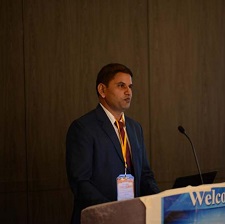
Co-Chair
Syamantak Mani Tripathi
Madhya Pradesh Pashu Chiktsa Vigyan Vishwavidyalaya, Jabalpur (M.P.), India
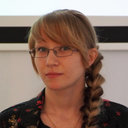
Svetlana N. Soloveva
Ekaterinburg Medical Research Center for Prophylaxis and Health Protection, RussiaTitle: Data on comparative subchronic or chronic in vivo toxicity of some metallic nanoparticles
Biography:
Svetlana N. Solovyeva is a post graduate fromYekaterinburg Medical Research Centre Prevention and Occupational Health of Industrial Workers, and present working in the department of Toxicology and Biological Prophylaxis.
Abstract:
Nanoparticles (NPs) of Fe3O4were produced by a chemical technique and nanoparticles of Ag, Au, CuO, NiO, Mn3O4, PbO, ZnO, TiO2, SiO2, Al2O3 - by laser ablation. In some experiments, we compared particles of a given chemical composition having different diameters, while in others – equidimensional NPs of different metals or metal oxides (Me-NPs). We used two experimental models: (a) a single intra-tracheal instillation of Me-NPs 24 h before the bronchoalveolar lavage to obtain a fluid for cytological and biochemical assessment; (b) repeated intra-peritoneal injections during 6-7 weeks in non-lethal doses to assess the thus induced subchronic intoxication by a lot of functional, biochemical and morphological indices. Besides, we carried out long-term inhalation experiments with Me-NPs of Fe2O3, SiO2 and NiO. We demonstrated that Me-NPs are much more noxious as compared with their fine micrometric or even submicron counterparts and are usually the more toxic the smaller their dimensions within the nano-scale range. However, for the RES-rich organs this dependence is not so unique due to intricate and contra-directional influences of the Me-NP’s size on toxic dynamics and toxicokinetics. We found also that toxicity of Me-NPs strongly depends on their chemical nature, solubility and specific mechanisms of action characteristic of a given metal in any chemical form. Solubilization of Me-NPs in biological milieus plays an important part in their toxicokinetics which can prevail over that of the physiological mechanisms controlling their distribution, retention and elimination. On the other hand, thanks to the high activity of these mechanisms, the organism is not defenseless against the impact of Me-NPs. However they are one of the most dangerous occupational and environmental hazards due to their high toxicity and virtually obligatory genotoxicity. Therefore standards of presumably safe Me-NP concentrations in workplace and ambient air should be very strict. As an additional protective measure, the toxicity and even genotoxicity of Me-NPs can be significantly attenuated by adequately composed combinations of some bioactive agents in innocuous doses.
Title: Going Towards Few Extra Miles to Unveil the Health Status of Sewage Workers of a Megacity, Kolkata, India.
Biography:
Rajlaxmi Basu is a PhD student, working at Institute of Hematology and Transfusion Medicine and a registered Fellow at University of Calcutta. She has exposure in occupational toxicology and occupational health and has attained many international conferences past days with utmost fervor and many more in National and International level. She has published 6 international articles in premium peer reviewed journals and 3 are in pipe lines and a book chapter also been published. She is also interested to explore in writing and attach to an editorial board of a journal.
Abstract:
This present report is about the couple of genetic polymorphism CYPIAI and GSTTI, GSTMI study in addicted male sewage workers. Additionally, whole blood Selenium (Se) concentration and intensity of DNA damage in each polymorphic group population were also examined. Results indicate that about 50.72% of total number of experiment subject (N=138) were with normal genotype and rest are with polymorphism of at least one gene. Here population group consisting of GSTTI null, GSTMI null had the most elevated whole blood Se concentration and it is significantly (p<0.05) higher than all other group. Further another group comprising with GSTMI null, CYPIAI mutated (heterozygous/ homozygous) with highest degree of intensity of DNA damage which is statistically significant (p<0.05) than any other discussed group. From this study it is clear that these couple of group with a genetic make-up of GSTTI null, GSTMI null and CYPIAI wild type andGSTMI null , CYPIAI mutated ( heterozygous/ homozygous) are the most alarming conditioned group. Here population with normal genotype was considered as control because an intragroup study has performed for a patch of occupationally exposed workers so they are matched in every respect and a comparison has performed and reported about the essential elemental status like Se and intensity of DNA damage. This is important for these study population to investigate few extra health status coupled with genetic make up.
Title: Toxic mystery in the depths - a case study of the Baltic Sea
Biography:
Katarzyna Bigus has completed her PhD in Pomeranian University in Slupsk. Her thesis concerned "Spatiotemporal variation of chemical and biological properties of sand sediments of selected beaches of the southern Baltic Sea" and was prepared under supervision of Prof. Jan Trojanowski. Till the 2016 she is a vice-director of the Institute of Biology and Environmental Protection
Abstract:
The distribution of heavy metals in coastal sediments of three Polish beaches was assessed. Core sediments collected in the central part of the Polish coast were characterized by seasonally increased concentration of Cd, Ag, Ba, Al, Cu, Cr and Bi. Despite the fact the majority of dredge material collected could be classified as light or trace contaminated by Cr, Cu, Zn, Ca and Hg among the studies beaches the highest content of Cd and Ag was discovered in Czolpino, located in the area of national park. It was discovered that 13 km of the beach in Czolpino was incidentally contaminated by an unidentified substance probably originated from chemical munitions dumped in the Baltic Sea after World War II. Chemicals originating from chemical warfare materials can spread from the disposal sites of the containers due to the impact of waves and sea currents. The behaviour of warfare agents in the marine environment is additionally influenced by the
Physical properties of the agents. All warfare agents react with sea water, but reaction rates can vary enormously depending on the chemical structure. Such reaction products are usually less or no longer toxic. Some compounds, however, show an extremely low solubility and slow degradability and this is why wide-scale threat to the marine environment from dissolved chemical warfare agents still exists.
Title: Some patterns of binary and ternary combined toxicity of metal oxide nanoparticles and its attenuation with bioprotective complexes
Biography:
Ilzira A. Minigalieva is a post graduate fromYekaterinburg Medical Research Centre Prevention and Occupational Health of Industrial Workers, and present working in the department of Toxicology and Biological Prophylaxis.
Abstract:
Amplification of Polymorphic DNA (RAPD) test for DNA fragmentation. The same features were assessed in control rats infected intraperitoneally with water with or without administration of the BPC. The copper oxide nanoparticles proved adversely bio-active in all respects considered in this study, their active in vivo solubilisation in biological fluids playing presumably an important role in both toxicokinetics and toxicodynamics. The BPC proposed and tested by us attenuated systemic and target organs toxicity, as well as genotoxicity of this substance. Judging by experimental data obtained in this investigation, occupational exposures to nano-scale copper oxide particles can present a significant health risk while the further search for its management with the help of innocuous bioprotectors seems to be justified.
Title: Toxic mystery in the depths - a case study of the Baltic Sea
Biography:
Katarzyna Bigus has completed her PhD in Pomeranian University in Slupsk. Her thesis concerned "Spatiotemporal variation of chemical and biological properties of sand sediments of selected beaches of the southern Baltic Sea" and was prepared under supervision of Prof. Jan Trojanowski. Till the 2016 she is a vice-director of the Institute of Biology and Environmental Protection
Abstract:
The distribution of heavy metals in coastal sediments of three Polish beaches was assessed. Core sediments collected in the central part of the Polish coast were characterized by seasonally increased concentration of Cd, Ag, Ba, Al, Cu, Cr and Bi. Despite the fact the majority of dredge material collected could be classified as light or trace contaminated by Cr, Cu, Zn, Ca and Hg among the studies beaches the highest content of Cd and Ag was discovered in Czolpino, located in the area of national park. It was discovered that 13 km of the beach in Czolpino was incidentally contaminated by an unidentified substance probably originated from chemical munitions dumped in the Baltic Sea after World War II. Chemicals originating from chemical warfare materials can spread from the disposal sites of the containers due to the impact of waves and sea currents. The behaviour of warfare agents in the marine environment is additionally influenced by the
Physical properties of the agents. All warfare agents react with sea water, but reaction rates can vary enormously depending on the chemical structure. Such reaction products are usually less or no longer toxic. Some compounds, however, show an extremely low solubility and slow degradability and this is why wide-scale threat to the marine environment from dissolved chemical warfare agents still exists.
Keynote Session:
Title: The holistic function of lung ultrasound; Its usefulness in diagnosing hemodynamic pulmonary edema
Biography:
Daniel Lichtenstein is medical intensivist, visiting Professor, working since 1989 at Francois Jardin’s medical ICU. He has defined in 1991 critical ultrasound as a holistic whole body approach. He has published regular textbooks since 1992 (last and 6th Edition, Lung Ultrasound in the Critically Ill, 2016, Springer), two dozens of original articles (critical, venous and lung ultrasound) and presented in 500 conferences.
Abstract:
Lung ultrasound was not supposed to exist. However, careful analysis shows that dynamics and artefacts can be described. The normal pattern is lung sliding associated with a repetition of the pleural line called the A-line. The B-line is a certain artefact with seven standardized criteria (comet-tail, arising from the pleural line, moving in sync with lung sliding, long, well-defined, erasing A-lines, hyperechoic). It can be seen in normal subjects. If numerous (more than two between two ribs are called Lung Rockets), and diffuse to the anterior chest wall, it indicates pathologic interstitial syndrome. The association of this pattern with lung sliding is called the B-profile in the BLUE-protocol. The B-profile showed a sensitivity of 97% and a specificity of 95% for the diagnosis of acute hemodynamic pulmonary edema. In ambulatory patients, detection of a B-profile may be relevant, as far as the interstitial syndrome of pulmonary edema is an early, infraclinical step. Diagnosing respiratory failure, mild dyspnea, controling volemia in dialysed patients, having another approach of left ventricle diastolic function are some of the potentials of the B-profile. A simple unit without Doppler is used for lung ultrasound, as well as whole body critical ultrasound. Other parts of lung ultrasound (detecting pneumothorax, pleural effusions or lung consolidations) are in the full scope of lung ultrasound, allowing a decrease of irradiation and costs. Considering lung ultrasound data to the traditional echocardiographic assessment adds basic pieces of information, and is part of the definition of the holistic function of lung ultrasound.
Title: Title:Toxico-pathological impact of subacute exposure to Acephate on health biomarkers of broiler chicks
Biography:
Dr. Syamantak Mani Tripathi is an Assistant Professor in the Department of Veterinary Pharmacology and Toxicology, College of Veterinary Science and Animal Husbandry, Chhattisharh Kamdhenu Vishwavidalya, Durg-491001 (Chhattisgarh) India. He has over ten years’ experience with hand-on applications including teams of researchers and technicians in the Pharmacology & Toxicology and Biotechnology division. His training and experience also includes applied animal investigation skills as a research scholar in the field of pesticide induced immunotoxicology and safety pharmacology studies. He has worked in multiple successful research projects funded by Indian Council of Agricultural Research and Department of Biotechnology, Government of India, supporting clinical development and leading to strong regulatory submissions for pesticides uses in agriculture. His research program is focused on the study of immune response to pesticide and xenobiotics in avian model. He received his Bachelor’s in Veterinary Science and Animal Husbandry from Jawaharlal Nehru Krishi Vishwavidyalaya, Jabalpur (MP), India; Masters of Veterinary Pharmacology from Anand Agricultural University, Anand (Gujarat), India and his Ph.D. in Veterinary Pharmacology and Toxicology from the Nanaji Deshmukh Veterinary Science University at Jabalpur (MP), India. His academic work was focused on “Immuno-genotoxicity of organophosphorus insecticide ‘acephate’ in white leghorn birds”. His work contributes towards understanding the molecular mechanism of acephate toxicity in avian model; studying interleukin gene(s) associated with immunity and development of test series to study immunotoxicity. Memberships he has include the Indian Society of Toxicology, Indian Society of Veterinary Pharmacology and Toxicology.
Abstract:
The present study aimed to investigate the immuno-toxicopathologic effects of environmental contaminant acephate (Ace) in experimentally exposed one day old White Leghorn broiler chicks (n = 150). The Ace was reconstituted in groundnut oil as vehicle (1 ml/kg) to obtain a final concentration of a single dose to the birds 21.3, 28.4 and 42.6 mg/kg body weight (BW) for twenty eight days of the experiment through the stomach tube. The chicks in the vehicle control group was given groundnut oil 1 ml/kg only while the chicks of plane control group had received only ad lib standard feed and water. Birds exposed to high dose (42.6 mg/kg BW) showed signs of toxicity (salivation, lacrimation, gasping, convulsions, frequent defecation and tremors). The birds exposed to low dose Ace showed marked increase in the body weight of chicks while medium and high doses (28.4 and 42.6 mg/kg) showed significantly (P ≤ 0.05) decreased body weight. Non-significantly (P ≥ 0.05) decreased TEC, Hb concentration; PCV and TLC were observed in the high dosed group as compared to control and other low dosed fed birds. Initially a non-significant compensatory increase followed by significant decrease in serum protein was observed during the study period. Serum albumin showed a significant (P ≤ 0.05) decrease in high dosed Ace fed birds on 28th day of study. Non-significant increase and significant decrease in serum on 14th and 28th day of study was observed respectively. The AChE activity was significantly (P ≤ 0.05) decreased in blood, serum and plasma in Ace fed birds compared to control birds. we found significantly (P ≤ 0.05) higher levels of serum ALT and AST in Ace fed birds as compared to control. During the experimentation Ace had showed dose dependant immunosuppressive effect on humoral immune response of birds from 28th day of experimentation. The Bursa of Fabricius in treated birds showed increased inter-follicular connective tissue proliferation, severe moderate cytoplasmic vacuolation, edema, and degenerative changes such as pyknosis and fragmentation of nuclei that depleted the follicles of lymphoid cells. In the spleen, disorganization of follicular patterns, severe congestion, cytoplasmic vacuolation, degenerative changes, and hyperplasia of reticular cells were noted. The thymus in treated birds exhibited congestion, hyper-cellularity, and a presence of immature monocytes in the medullary region, as well as myoid cell necrosis. In conclusion, these studies clearly demonstrated that Ace could induce immuno-toxicopathological effects on health biomarkers of broiler chicks.
Oral Session 1:
- Environmental Toxicology and Risk Assessment,Immunotherapy and Cancer/Tumour Immunology,Future Directions in Immuno-Oncology
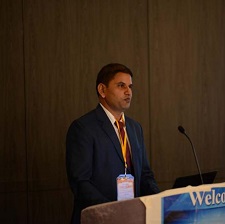
Chair
Syamantak Mani Tripathi
Madhya Pradesh Pashu Chiktsa Vigyan Vishwavidyalaya, Jabalpur (M.P.), India

Co-Chair
Thomas Sanderson
Universite du Quebec,Canada





